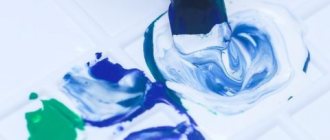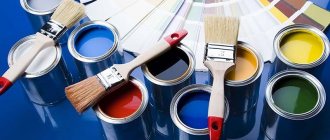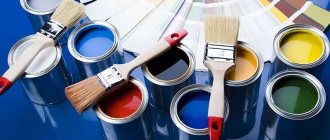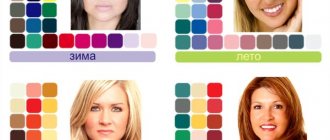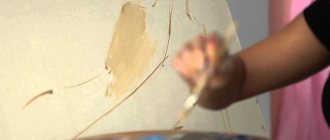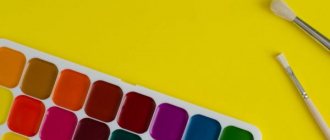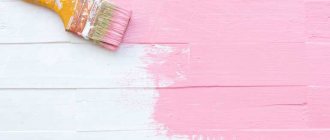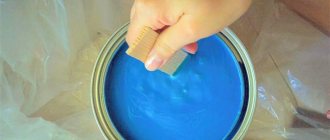Ways to obtain different shades of khaki
This interesting color scheme is easily changed under the influence of others. If the end result is far from expected, there are ways to fix it:
- Red will help give warmth;
- Green can add softness and “naturalness”;
- purple will make the source brighter;
- yellow is used for lightening;
- to darken the color you need gray;
- blue will lead to cool colors;
- white will bring it closer to the shade of “coffee with milk”;
- black introduced carefully will create a dramatic, deep background.
Khaki shades
It will not be superfluous to prepare a drawing or photo with the desired sample in advance in order to achieve the expected effect. You can refer to it during the creative mixing process.
So, getting khaki yourself using a few basic, readily available paints is not that difficult. In addition, this produces surprisingly attractive facets of its universal spectrum.
How to Mix Acrylic Paints for Brown
Before getting the khaki color from the colors of the base palette, we place on it approximately equal-sized drops of red, yellow and blue, leaving a large amount of space between each of them. Add white, then combine equal parts of each of the base colors. Mix them together using a palette knife. The process will turn the cloudy mixture into a rich brown color. Depending on the base shades used, results may vary slightly.
Special black
In drawing, this tone is used quite often, so many people are familiar with the fact that it has many shades. If you don’t have the appropriate color scheme at hand, you can create it by mixing existing paints. In this case, most likely, it will turn out dark with one or another tint.
The classic tone is obtained by mixing red, blue and yellow, but you can use not only these colors of the palette. The use of complementary paints will help create one or another shade of dark. A juicy and deep color is obtained by mixing brown and blue.
Black is one of the three basic colors that perfectly absorbs light, unlike white. If we compare it with natural materials, Vantablack carbon has similar properties: it absorbs almost 100% of the radiation that hits it. In ancient times it was believed that it was impossible to reproduce natural coal.
For your information! The matte black tone was obtained using soot from burnt bones. Currently, natural pigments are also used - soot and graphite.
Preparatory stage
It is better to carry out such painting work indoors in the warm season. First you need to thoroughly clean the work area from dust and unnecessary things.
The surface of the car should be washed and dried. All components that will not be painted must be removed. This includes handles, locks, mirrors, insignia. Anything that cannot be removed must be covered with thick paper and secured with masking tape.
After the car has been cleaned and covered with protective material, you can begin to remove the paintwork. Since it is quite difficult to do this manually, it is better to use a special grinding machine with fine abrasive or sandblasting (how to choose a sandblasting gun). The final stage in this case is blowing the car with compressed air.
Removing paint from a car
Basic Rules for Mixing Food Colorings
When mixing food coloring, it is important to follow several rules and then the result will definitely please you.
Food pigments are divided into water-soluble and fat-soluble, which is usually indicated on the packaging. Fat-soluble paints are used for coloring chocolate, butter cream, and cocoa butter. For cream, caramel, dough products, glaze, mastic, you should choose water-soluble dyes.
The wrong type of dye will not give you the desired result, or will completely ruin the dish. You cannot mix two types of dyes with each other.
Dyes can also be divided according to the form of release: dry, liquid and gel.
- Dry food colors are usually diluted in water or vodka before being added to the dish. Can also be used as a dry pigment for coloring mastic or wafer sheets. When using dry paints, mix them diluted. That is, first dilute the main color, then gradually introduce additional colors into it. As soon as the mixture acquires the desired shade, it can be added to the dish.
- Gel dyes are the most convenient to use, since they do not need to be diluted like dry dyes, and they do not add excess moisture like liquid paints. To color cream, dough or caramel, you can mix colors directly in the dish.
- Liquid dyes have a lower density than gel dyes, mix well with each other and produce beautiful watercolor shades. They are well suited for painting on pastry surfaces and coloring biscuits. You can mix this type of paint directly in a dish.
Always test the resulting color on a small part of the dish before coloring the whole thing.
Is it possible to mix dry and liquid food coloring with each other? Experienced chefs do not recommend doing this, as the result may be unpredictable. In order for the color to turn out beautiful, and the dish to be colored evenly and not change the consistency, it is recommended to mix dyes of the same type, release form and manufacturer.
You can buy high quality food colorings on the website 100ing.ru. The catalog includes dry, liquid, gel dyes, kandurin, as well as food markers. If you want to prepare a bright, beautiful dish or product, but do not accept synthetic pigments, pay attention to natural and safe, but no less bright, Luxomix dyes.
Scheme for obtaining khaki color from paints
To understand exactly how to make khaki color, having other tones at hand, you need to remember the meaning of this word.
Khaki means “soil” according to the exact translation from the Hindustani language.
The color of earth is brown, so it is most often used as a base when mixing paints for the desired color. Then the final result can be easily adjusted towards the desired undertone using certain cold or warm colors.
Brown and green
For the first method of obtaining khaki color you will need:
- prepare brown;
- prepare green;
- mix the tones in a 1:1 ratio, or less green if you need a specific tone.
It is better to combine shades carefully, gradually adding green to brown to get the desired result.
Blue and orange
Based on what colors you mix to get brown (read the article on how to get brown), there is another possible way to create the required tone. To do this you need:
- take blue;
- take orange;
- mix shades in a 1:1 ratio (you can experiment by changing the proportions).
Close to khaki - olive color. Read about how to get olive on our website.
Khaki from acrylic paints
Let's look at an example of how to mix acrylic paints to realize an idea.
- First, you need to prepare your brush and water for rinsing it.
- Secondly, you need a clean surface, a palette and a palette knife with paper napkins to remove dirt during work.
- The next step is to take cadmium yellow medium, cadmium red, titanium white and sky blue.
- A small amount of red, yellow and blue is mixed on the palette, a little white is added to each shade, then when they combine the same amount using a palette knife, a brown tone will appear at the output.
- By adding a small amount of white we get khaki.
What colors of paint should be mixed to get brown?
Brown is considered complex; when creating it, you can use all the primary colors. There are several ways to get brown:
- Classic: green + red in proportions 50:50.
- The main trio: blue + yellow + red in equal quantities.
- Mixing: blue + orange or gray + orange. You can vary the intensity of the hue by adding less or more gray.
- Optional: green + purple + orange. This shade has a pleasant red or red tint. You can also mix yellow + purple - the color will have a yellowish tint.
| Combination | Proportions | Resulting shade |
| Green + red | 1:1 | Brown |
| Blue + orange Gray + orange | 1:1 | Tan |
| Yellow + purple | 0,8:1 | Tan |
| Red + yellow + blue | 2:2:0,5 | Red-brown |
| Light brown + indigo (black) | 1:1 | Chocolate |
| Green + purple + orange | 1:0,8:1 | Red-brown |
Painting a car in chameleon color
Chameleon paint creates an iridescent effect on the car. Paint is obtained by mixing several types of pigments. Layers of pigments create a mirror effect, and the shimmer depends on the thickness of the layer. Chameleon paint is very expensive, so it is recommended to entrust the work to a professional.
Painting requires three steps:
- Application of primer-tonor. It is best to use black or white pigment. Primer-tonor paint creates the main color, and the subsequent pigment will refract it.
- Applying the base layer. The overflow effect depends on its thickness.
- Special varnish.
The third and fourth are at a distance of 30 cm. All layers are dried for 5 minutes. You can apply as many layers as you like. After all applied layers have dried, coat the work with a special transparent varnish, preferably twice.
https://youtube.com/watch?v=JySeHCNPSnE
Using the CMYK model
You can also find exactly the khaki shade you need using the CMYK color model. CMYK is an abbreviation for cyan, magenta, yellow and black. Find the brown you want. Using graphics editors, you can calculate the exact percentages of magenta, yellow, cyan and black needed for that color and then mix them accordingly. Please note that magenta, yellow and cyan are more accurate primary colors, but they are not the standard for paint mixing today.
Features of khaki color and its relevance
Today, among the most popular trends in fashion and interior design, military and casual styles are distinguished, often using this color. Close to the natural palette of earth, tree foliage or swamps, it easily fits into the environment and is also used in painting.
Indispensable for softening the richness of the background of a painting or interior, this color scheme is self-sufficient and offers a large number of options.
Khaki is widely used when painting a car in camouflage
Khaki shades in clothes
Required Tools
To paint a car khaki with your own hands, you need to have:
- material for gluing unnecessary areas of the car;
- masking tape;
- paint;
- paint thinner;
- an abrasive machine or sandblaster to remove the old coating;
- putty;
- surface degreasing agent:
- priming;
- a gun with a nozzle for spraying paint;
- polish;
- liquid wax
Necessary materials for painting a car
If you plan to make the surface of the car matte, liquid wax is not needed.
It should be noted that for a rich and correct, in terms of color, shade, it is not recommended to use more than 4 colors.
